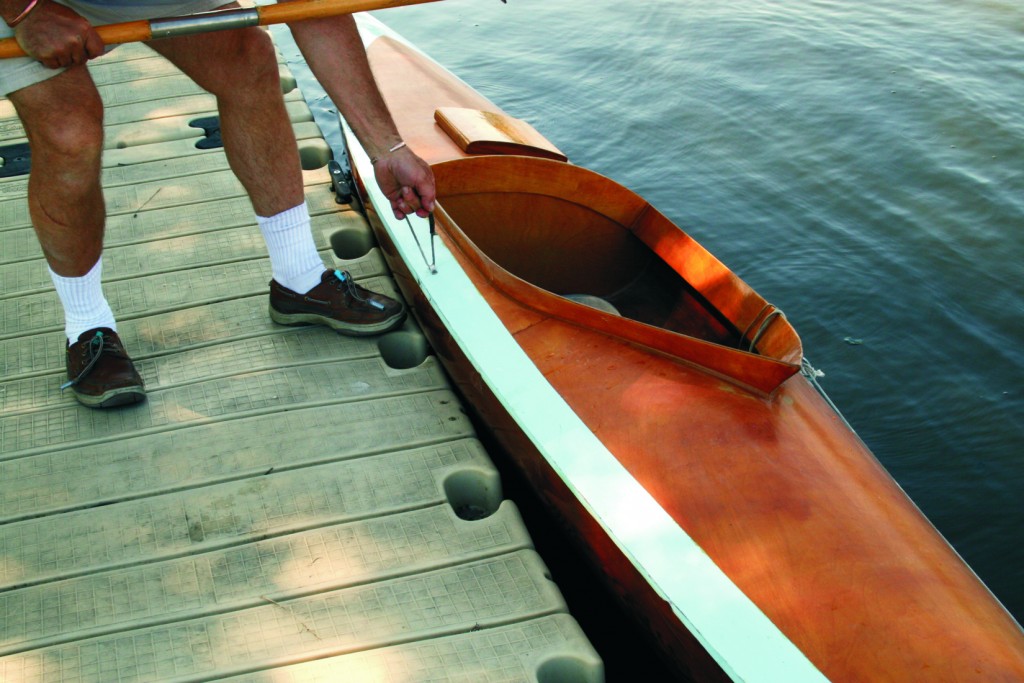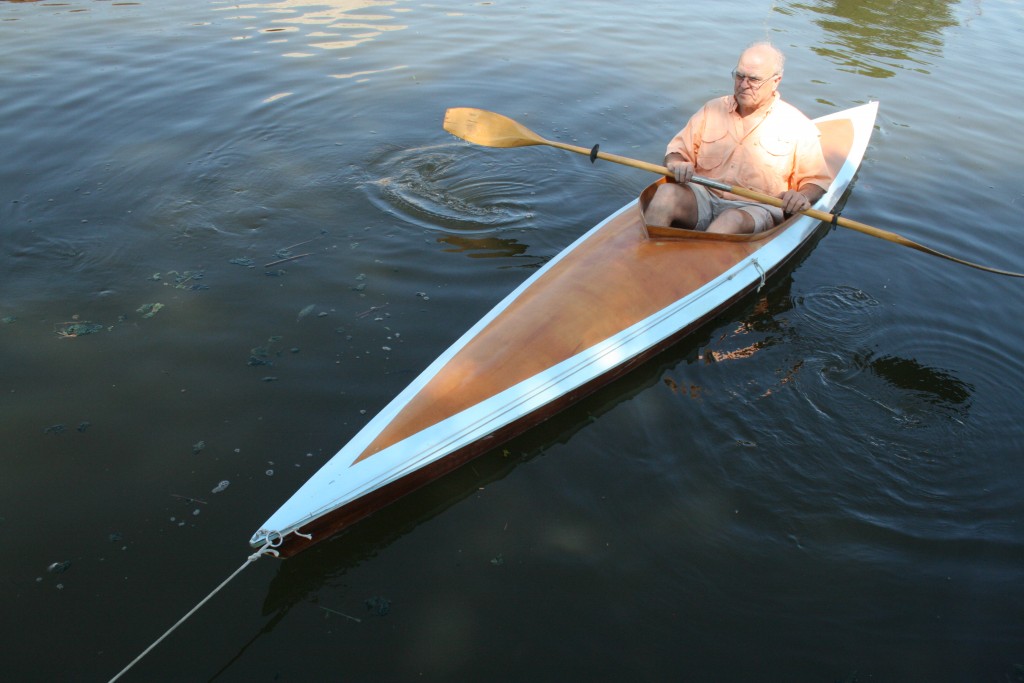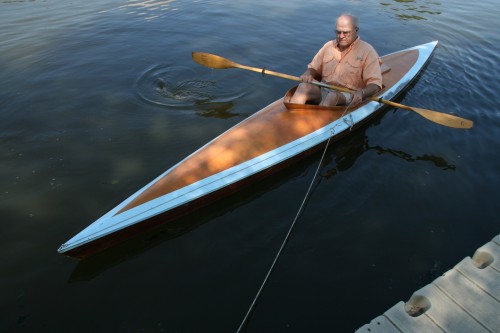
by Captain James R. Watson—GBI Technical Advisor
Above: Captain James R. Watson in his kayak. Note how the kayak rides at anchor from the bow.
Kayaks are versatile craft. I’m a lucky guy who has had decades of pleasure cruising, exploring, fishing, and simply relaxing on many different streams and lakes throughout Michigan and Canada in my stripper kayak. Comparing the investment dollar per pleasure derived, my kayak wins hands down over all the other watercraft I’ve owned. In her wake, I’ve been taught many lessons, albeit some the hard way. Here are a few I thought worth sharing.
Tying the craft to your car top
Thirty years ago when my kayak was new and we were on our way out for her first trip, the boat blew off of the car while crossing a long, high bridge exposed to high winds. It didn’t come completely off, just enough to beat against the side of the car until we stopped. Lucky for me there wasn’t a lot of traffic; no one ran over the boat or ran into me or my car.
Lesson learned: In addition to taking your time, use stretchy line. Nylon is best. I still prefer line over straps and ratchets. I don’t trust bungies or S hooks. Prior to tying down, I place 4″-wide strips of Dow Ethafoam® between the carrier crossbars and the boat. I tie to the forward and aft crossbars then cinch them to each other. The foam crushes slightly, the line stretches taut and when cinched, stays taut. All this stretching stores energy and keeps everything tight.
In addition, I tie a line from bow and stern eyes to the car. Old cars had nice bumpers or a frame to tie to. Nowadays, you’re tying to plastic ground effects. The key is that these ties connect the boat to the car whereas those over the boat hull only connect to the car top carrier. In addition, these lines on the end of the boat prevent it from canting when exposed to heavy winds over bridges or from passing trucks.
Grab loops on the kayak
Grab loops, especially those positioned amidships (above), are useful on fast-flowing streams. Grab loops provide a firm connection between you and the craft when you’re launching or retrieving and the craft wants to take off downstream without you. I was on the main stream of the Au Sable River when taught that lesson. A simple rope loop or hoop is easy to grab and flexible.

Anchoring technique
I foresaw the hazards of anchoring from an amidship position and thus came up with this scheme. I run a static line from my amidship eye, where my handle is attached, to my bow eye. On the static line is a metal ring with a line tied to it and led to the cockpit. Judging water depth, I calculate my anchor scope and fasten my rode to the ring. I lower my anchor, a lightweight Danforth® (a folding grapnel would probably work as well) along with the scope then allow all to run forward so the kayak rides at anchor from the bow. To retrieve while seated in the cockpit, I pull the ring aft and take in the rode, or anchor line, and the anchor.







